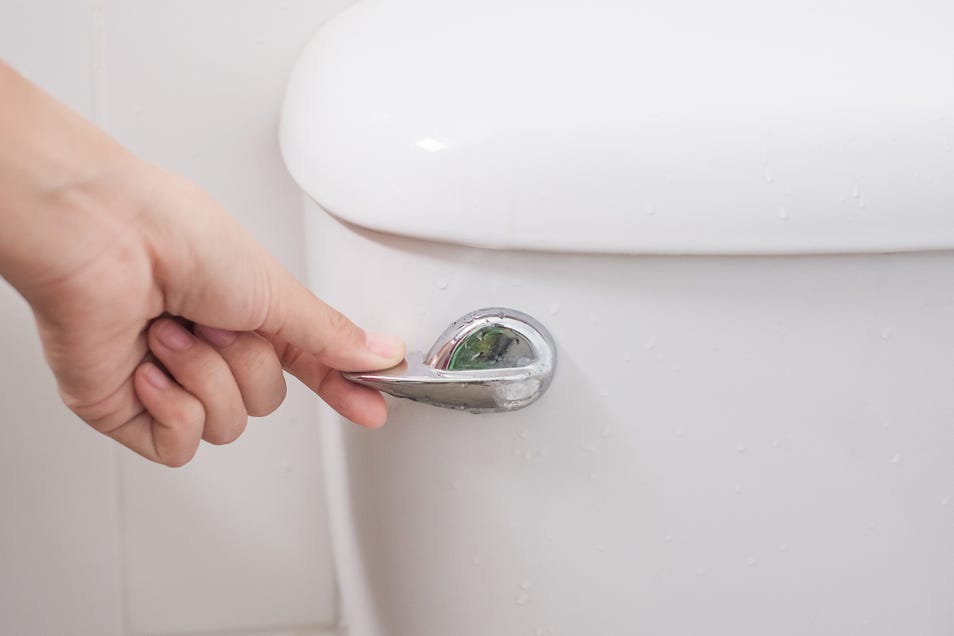How to Adjust Water Level in Toilet Bowl

It can be easy to overlook the water level as a possible culprit for a problematic toilet. But, maintaining the optimal level in your toilet bowl is necessary to ensure proper functioning, water conservation, and inefficient flushing.
When there isn’t enough water in the tank, the flushing power may suffer, leading to troublesome blocks and clogs. When there's too much water in your toilet bowl, though, your toilet may not flush all the way or overflow.
Luckily, neither of these issues is too difficult to solve. Read our article about how to adjust water level in toilet bowl to transform your bathroom into a wellness oasis.
Signs you have a water level problem
Determining whether your toilet requires water level adjustment is straightforward. It should be about half full. Another way to inspect for a water level problem is to check the water level in the toilet tank, which should be approximately 1 to 2 inches below the fill valve and overflow tube or aligned precisely with the fill line if your tank includes one.
Other signs to look for that indicate the wrong water levels in your toilet bowl include:
A toilet that won’t flush at all
Weak flushes
Water constantly running in your toilet
How to adjust water level in toilet bowl
Depending on why your toilet bowl water level is low or high, you can try the following methods to readjust the water level.
But before you begin using any of the methods below, you must figure out if your water level is too high or too low. Then, remove your toilet tank lid, turn off the water supply, and flush the toilet to empty the tank.
1. Adjust the Ball-and-Arm Float
The ball-and-arm flot looks like a ball with a metal arm. To change the water level, you have to adjust the screw that attaches the arm to the fill valve.
To raise the water level, tighten the screw by rotating the screwdriver clockwise. To lower the water level, loosen the screw by rotating the screwdriver counterclockwise.
Apart from adjusting the toilet float, check if it is in good condition. A quick visual inspection should be enough to determine whether the ball has any cracks, holes, or corrosion and whether you should get a replacement.
2. Adjust a Cylinder Float
A cylinder float is a cylindrical shape with a central bar and is found in newer toilet models. To adjust the water level, locate the adjustment stem, which is a slender tube linked to both the float and fill valve.
When there's a release clip on the adjustment stem, you can adjust the water level by raising or lowering it. To increase, pinch the clip and slide it upward along the stem; to decrease, pinch the clip and move it downward on the stem.
If there's no release clip, adjust the water level by tightening or loosening the screw on top of the adjustment stem. Turn the screw clockwise to raise the water level and counterclockwise to lower it, ensuring to make one rotation per adjustment.
3. Install a New Fill Valve
If adjusting the float doesn't resolve the water level issue, the fill valve might be the culprit. Observe the tank during a flush to check for leaks.
To replace the fill valve, turn off the toilet’s water supply and empty the tank. Then, remove the old valve by unscrewing two nuts: one connecting it to the water supply and the other securing it to the tank.
Afterward, lift out the old valve, install the new one in the tank, and reattach it to both the water supply and tank.
How to keep the water level where it belongs
Performing routine maintenance and promptly addressing any issues ensures that you maintain the correct water level in your toilet.
Regularly check inside the toilet tank and around the base for any potential leaks.
Check the water levels inside the toilet tank and adjust the fill valve to ensure the water level is around one inch below the rim of the overflow tube or at the manufacturer’s fill line.
Promptly address and remove clogs in the toilet trap way or drain with a plunger or toilet auger.
FAQs
What is the normal water level in a toilet bowl?
The normal water level in a toilet bowl is about halfway full. Anytime the water level is higher or lower than half full, you need to make adjustments or replace broken parts.
Should the toilet tank empty completely when flushed?
No, the toilet tank should not be emptied when flushed. In fact, it is important to maintain a certain amount of water in the tank to ensure proper flushing and prevent damage to the toilet.
Is it normal for the toilet bowl water level to drop?
No, if your water level isn’t high enough, something is causing it to drop unnecessarily. No matter what is causing your toilet bowl to empty, you should address the problem as quickly as possible.
.png?width=70&height=88&format=png&quality=50)